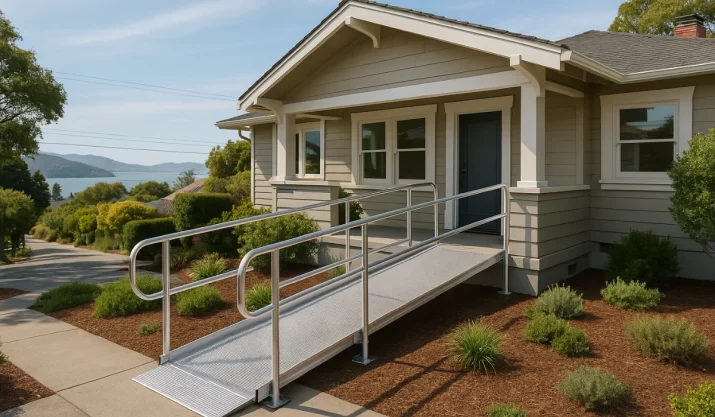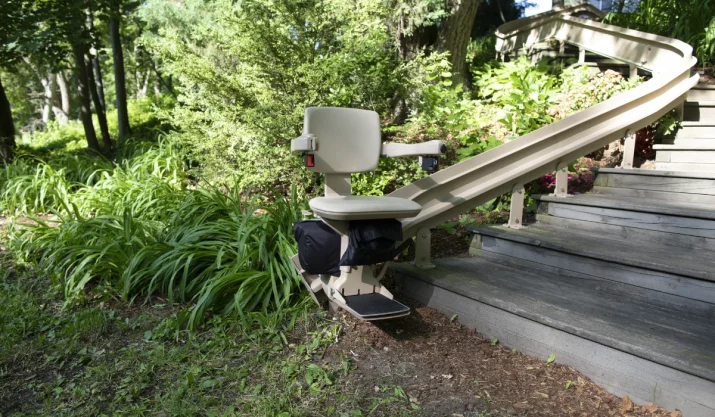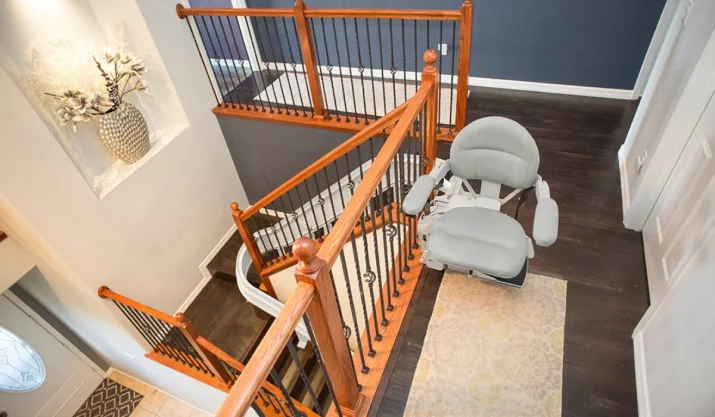Are Platform Lifts Worth It for California Homes with Limited Space?

Table of Contents
It can be hard to move around at home, especially in Bay Area houses where space is limited. Narrow stairs and small rooms often make it impossible to install a full elevator, which is why vertical platform lifts can make such a big difference.
If you’re wondering whether platform lifts are worth it for small Bay Area homes, the answer is yes. They’re an excellent accessibility solution for anyone who needs safe, easy movement between floors. They help people with mobility challenges move safely between levels without major remodeling.
You’ll learn how vertical platform lifts work, their safety features, how they compare to other options, and why they’re a wise choice for California homes.
Key Takeaways
- Vertical platform lifts save space and cost less than a full home elevator.
- They help people with limited mobility move safely with wheelchairs or power chairs.
- These lifts include safety features like stop buttons, safety gates, and non-slip platforms.
- Professional installation by California Mobility ensures your lift complies with local building codes.
How Vertical Platform Lifts Work in Small Bay Area Homes
A vertical platform lift, or VPL, works much like a small elevator, and its simple function helps users move smoothly between levels. It moves straight up and down to lift a person along with their wheelchair, scooter, or power chair. Because it doesn’t need a large shaft or machine room, it’s perfect for homes with limited space.
Homeowners can install a VPL indoors or outdoors. Many people place vertical lifts on porches, decks, or in garages to make it easier to enter and exit the home. Most models reach up to 14 feet and include simple push-button controls. These lifts operate smoothly and quietly, making daily use safe and comfortable.
For anyone who struggles with stairs, a lift makes home access easier and more independent.
At California Mobility, we offer a selection of vertical platform lifts in California. Our team also provides a consultation to help you choose the right lift for your space and needs, as well as installation services to ensure proper installation and compliance with local building codes and ADA regulations.
Platform Lifts vs. Stair Lifts and Home Elevators
When looking at ways to make your home more accessible, you’ll find several options: stair lifts, home elevators, and platform lifts. Each one helps in different ways, depending on your space and mobility needs. The chart below shows how they compare:
| Feature | Stair Lift | Platform Lift (VPL) | Home Elevator |
|---|---|---|---|
| Main Use | Carries a seated person up or down stairs | Lifts a person with a wheelchair or scooter | Moves people and items between floors |
| Space Needed | Fits on existing stairs | Small and space-efficient (about 5–7 sq. ft.) | Needs a large hoistway and machine room |
| Weight Capacity | 300–400 lbs | 600–750 lbs | 750–1,000+ lbs |
| Ease of Use | Sit and ride | Roll on and press a button | Push-button operation, fully enclosed |
| Cost Range | Low to moderate | Moderate and cost-effective | High cost range, requires major construction |
| Installation Time | 1 day | 1–2 days | Several weeks |
| Best For | People who can transfer to a seat | Wheelchair users and those with limited mobility | Homes needing full multi-level access |
A stair lift runs along your staircase and carries a seated person up or down. It’s a good option for people who can walk short distances and transfer to a chair.
If you want to compare a stair lift with a residential elevator, the biggest difference is the amount of space and construction required. A home elevator is more like what you see in commercial buildings. It can span multiple floors, but it needs a large hoistway and usually costs much more to build.
Platform lifts are in between. They carry both the person and their mobility device, like a wheelchair or scooter. They also take up very little room and cost far less than a traditional elevator. That’s why so many Bay Area homeowners choose them.
If you’re unsure which lift best fits your home, our team can walk you through the pros and cons of each option and help you choose the right one.
Safety and Durability
One of the best things about a platform lift is its safety. Each lift includes key safety features, such as an emergency stop button, safety gates, and automatic brakes. The platform has a non-slip surface, and most models can hold 600 to 750 pounds.
Since platform lifts don’t need a big shaft or machine room, installation is quick. Most installations take one to two days, depending on your home’s layout. Our installers set up the base, connect the power, and test all safety features. We also confirm the lift meets California building codes, so it’s safe and approved for your home.
Most vertical platform lifts meet ADA guidelines, making them safer and easier for wheelchair users and others with limited mobility. Every lift is installed in accordance with local codes, which gives you a secure, reliable, and built-to-last system.
In addition to safety, manufacturers design platform lifts to fit easily into small spaces.
Space-Saving Design
Space is limited in many Bay Area homes, but a vertical platform lift doesn’t need much room. Most lifts take up only about five to seven square feet. That’s much smaller than a long wheelchair ramp, which can stretch across several yards. The compact size makes installing a vertical platform lift in tight spaces a practical option for many homeowners.
Installation usually takes one to two days. For families looking to improve accessibility without major construction, platform lifts are among the best options.
Affordable and Practical
Platform lifts are among the most affordable ways to make your home more accessible, and people often compare them to home lifts because both serve a similar purpose and offer the same convenience. They cost far less than home elevators and need very little upkeep. After installation, a lift provides reliable access for years with only occasional maintenance.
They also add value to your home by making it easier to live in and more appealing to future buyers. For older adults aging in place, a platform lift helps maintain independence and reduces the need for caregiver help.
At California Mobility, we offer several lift options to fit your budget, space, and mobility needs, making us one of the most trusted names in mobility solutions.
Platform Lift Options
There are several types of platform lifts to choose from. Some are open porch lifts with guardrails, while others include enclosed walls for extra weather protection.
Indoor lifts are compact and fit into tight spaces without major remodeling, while manufacturers design outdoor wheelchair lifts to handle rain, humidity, and California’s coastal weather. You can also choose different platform sizes and entry styles based on your available space.
If you or a loved one uses a scooter or power chair, we can help you find a model that fits your size, controls, and weight needs perfectly.
Making the Right Choice for Your Bay Area Home
If you’re still wondering whether platform lifts are worth it for Bay Area homes with limited space, think about what matters most: your safety, comfort, and freedom.
A vertical platform lift gives you easy access between levels without taking up much room. It’s durable, safe, and simple to use, making it an excellent option for anyone with mobility challenges.
At California Mobility, we specialize in installing high-quality vertical platform lifts and other home accessibility upgrades across the Bay Area.
Contact us today or request a free quote. Our team of experts can help you choose the right model, handle the setup, and make sure everything complies with local building codes.








